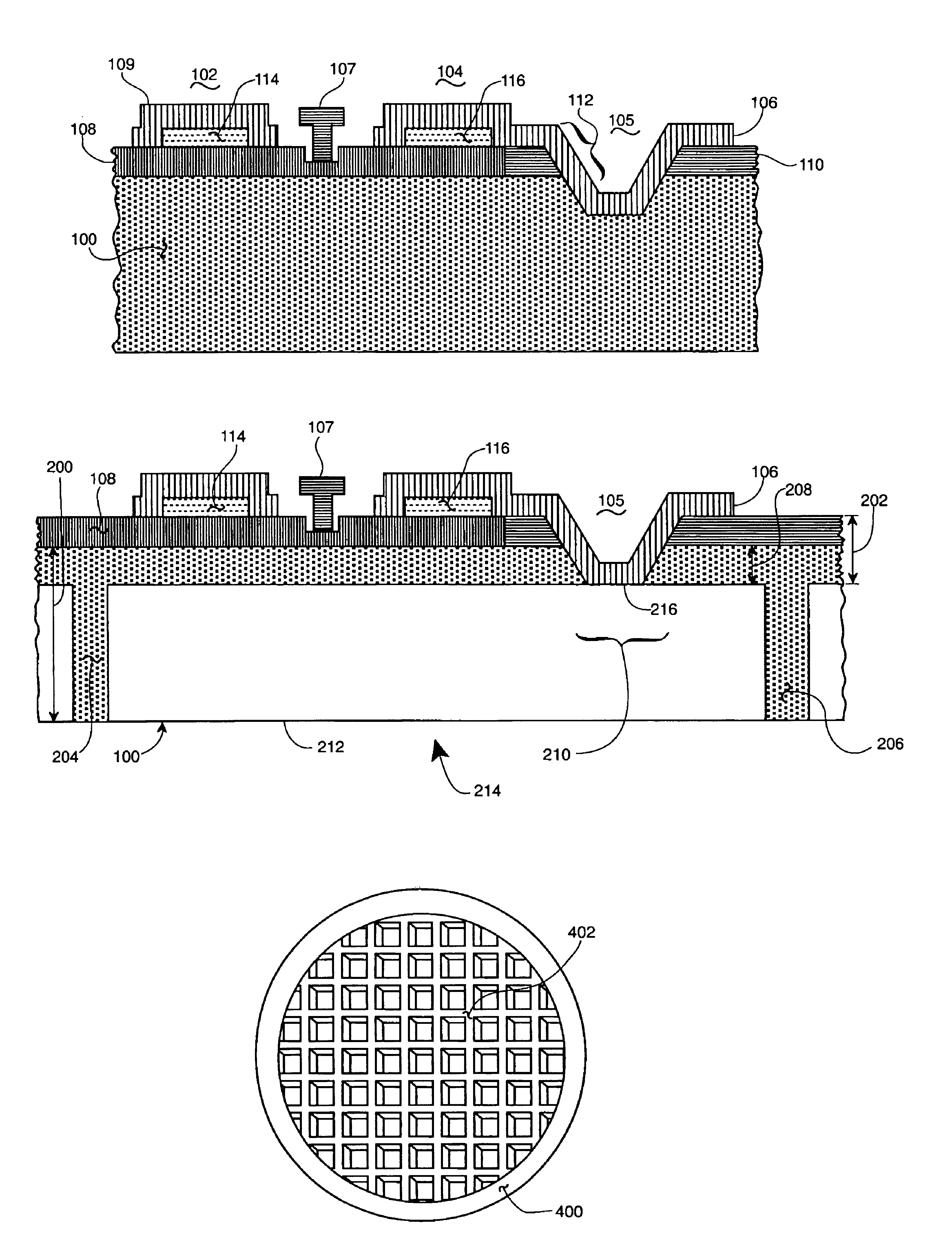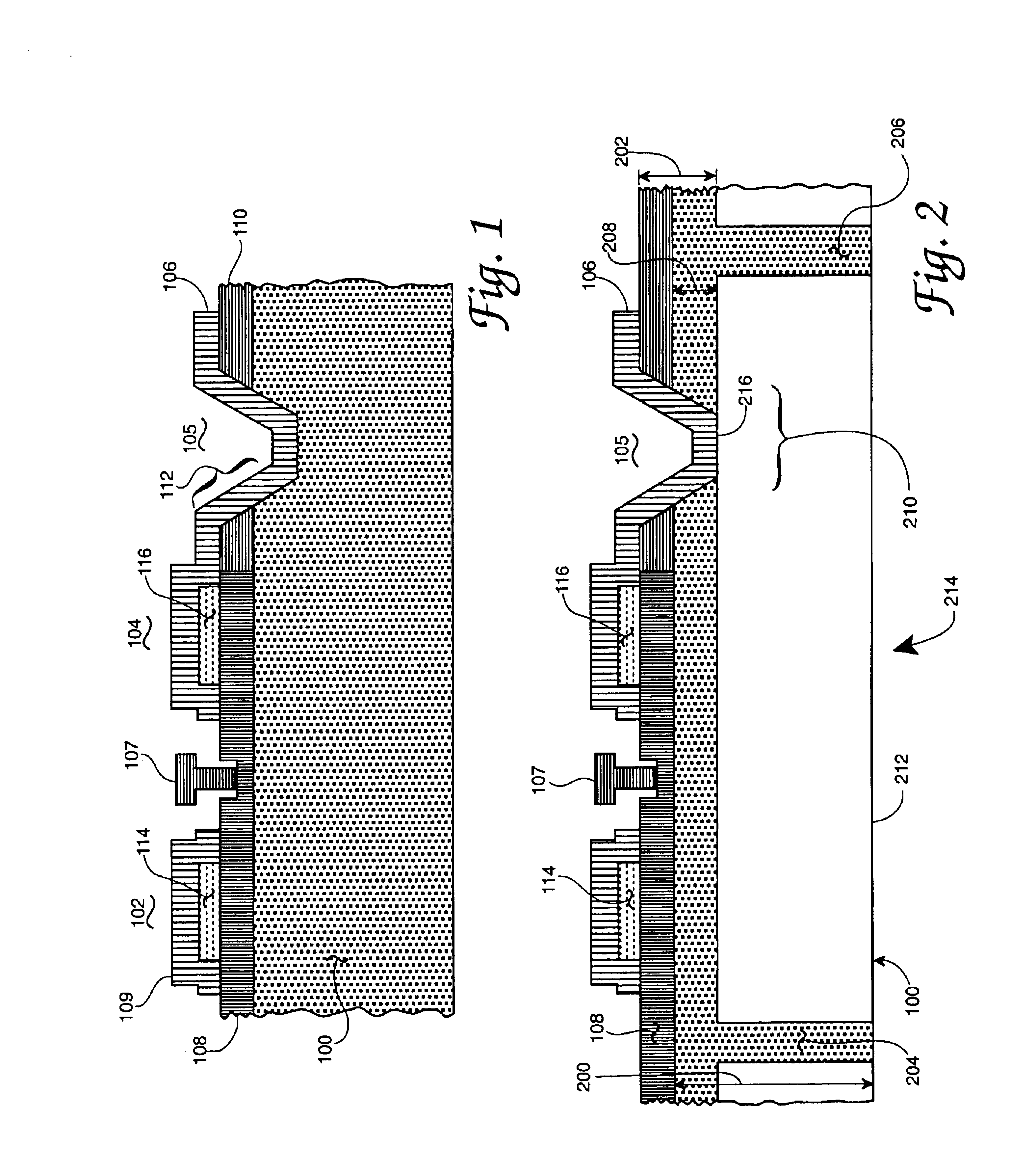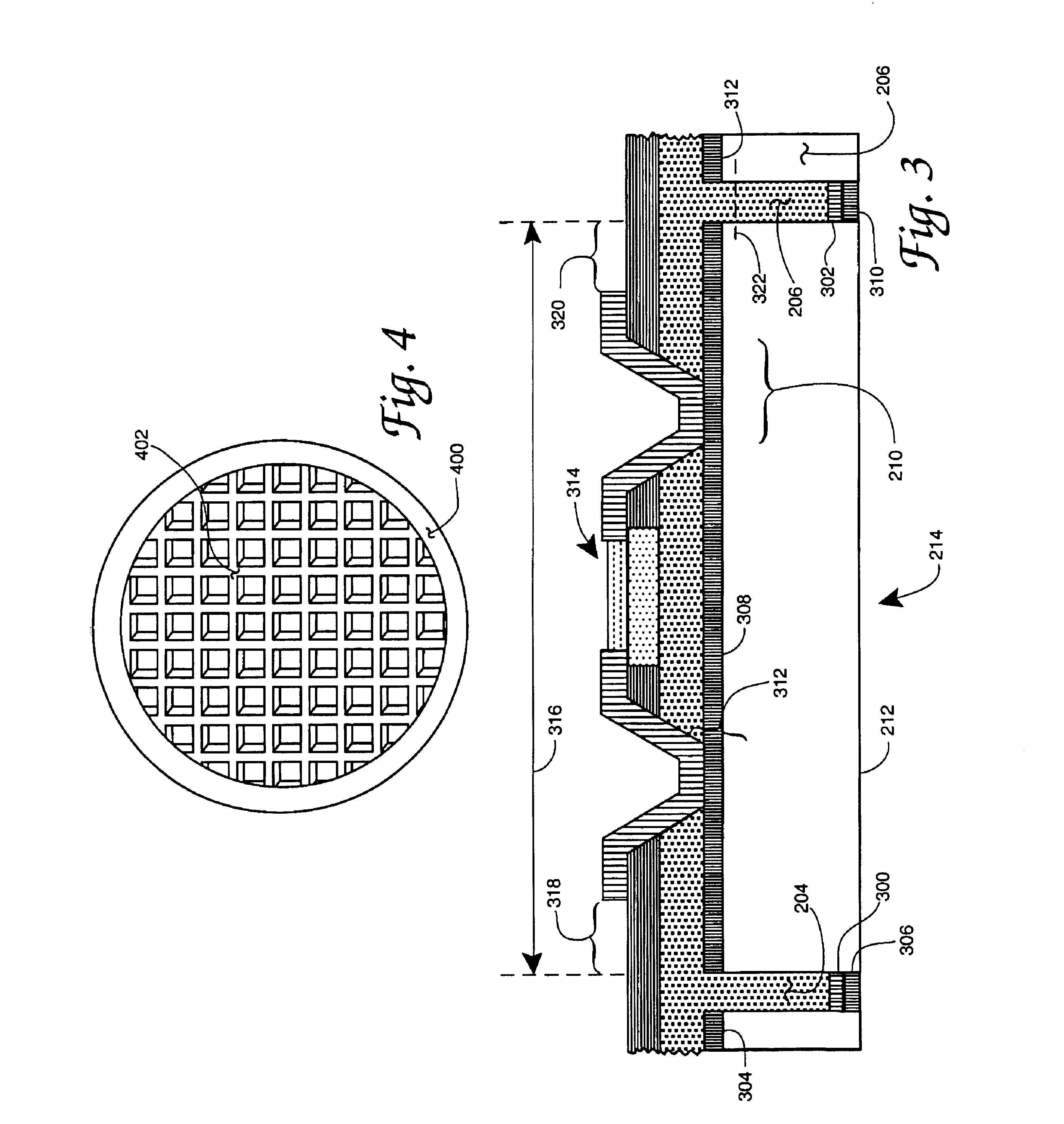Stiffened backside fabrication for microwave radio frequency wafers
a backside fabrication and microwave radio frequency technology, applied in the direction of electrical equipment, semiconductor devices, semiconductor/solid-state device details, etc., can solve the problems of excessive device performance loss, thinner wafers usually break, and processing of wafers usually stop, so as to achieve less damage susceptible and less fragile
- Summary
- Abstract
- Description
- Claims
- Application Information
AI Technical Summary
Benefits of technology
Problems solved by technology
Method used
Image
Examples
Embodiment Construction
[0027]FIG. 1 in the drawings shows a profile view of a field effect transistor of a type that may be employed in a radio frequency integrated circuit device. The FIG. 1 transistor is shown in a not to scale cross sectional view representing the state of the transistor following completion of the transistor fabrication sequence and representing partial accomplishment of the complete wafer multiple transistor fabrication process i.e., following completion of the wafer frontal side processing but prior to commencement of the wafer backside processing. In this state of completion several aspects of the present wafer backside invention may be conveniently viewed and discussed. The FIG. 1 transistor may be considered to be of gallium arsenide composition although transistors made of silicon and other materials are equally viable as hosts for the present invention. In FIG. 1 it is notable that via holes are normally formed on the backside of a wafer, after wafer thinning, and while the waf...
PUM
 Login to View More
Login to View More Abstract
Description
Claims
Application Information
 Login to View More
Login to View More - R&D
- Intellectual Property
- Life Sciences
- Materials
- Tech Scout
- Unparalleled Data Quality
- Higher Quality Content
- 60% Fewer Hallucinations
Browse by: Latest US Patents, China's latest patents, Technical Efficacy Thesaurus, Application Domain, Technology Topic, Popular Technical Reports.
© 2025 PatSnap. All rights reserved.Legal|Privacy policy|Modern Slavery Act Transparency Statement|Sitemap|About US| Contact US: help@patsnap.com



